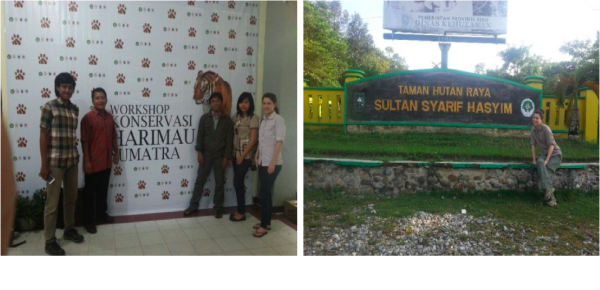Melissa Arias
My summer research was located in the RIMBA wildlife corridor in Central Sumatra, Indonesia. I conducted both an internship and research for the Tiger Conservation Program of the World Wildlife Fund Indonesia. The internship part of my summer involved monitoring tiger populations across the landscape through the use of camera-traps and assessing threats from forest conversion, poaching, and increased human-wildlife conflict.
My research, which I will continue developing through my last year at F&ES, uses the information from the camera traps to investigate the implications of large-scale forest conversion on the distribution of 5 felid species, including the Sumatran Tiger (Panthera tigris sumatrae) in the region. By using a series of species distribution models and geographical analyses, I am trying to understand how tigers and other smaller felids use human modified landscapes, specifically the areas that are currently under oil palm or logging concessions.
Through this analysis, I am hoping to inform land-use planners and policy makers about which areas to prioritize for conservation and how to integrate production and development with wildlife conservation demands. Additionally, I am interested in comparing the results from this study with information about ecosystem services in the area including carbon and water yield in order to improve land management choices.
